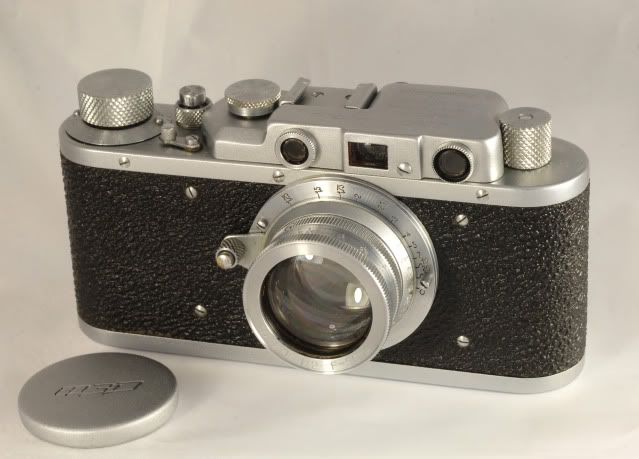pauls52
Established
This is a bit off topic but I find this stuff fascinating and this should correct any misconceptions I may have promoted. The quote is taken directly from an online PDF which I think is the Leica Lens Manual (223 pages but there is no cover page).
So in other words, the design was a performance trade off between vignetting and astigmatism and improved centre definition. This of course is a single tehnical focussed source and who knows if any other considerations may have been involved.
"As the Elmax was a bit complicated to build (as a cemented triple) Berek changed
the design to a triplet with the last element as a cemented doublet.
the design to a triplet with the last element as a cemented doublet.
Figure 5: 2.1.3 C Elmax. (unfortunately, all diagrams & photos havebeen removed from the PDF)
The Elmar was born. The design date on the documents tell us that the first design
of the Elmar was completed in 1925. This lens had improved imagery when
compared to the Elmax. The Elmar design is similar to a Tessar design, with one
important exception, the location of the stop. In optical design the location of the
stop is part of the tools for aberration correction. Depending on the design this
location can be more or less influential. In the case of the Elmar, the stop is located
between the first and second element. This forward location cuts off some of the
rays at the edge of the lens and while producing some additional vignetting, also
improves the central definition. As the lens is now unsymmetrical around the stop,
we see some astigmatism and coma in the outer zones of the field."of the Elmar was completed in 1925. This lens had improved imagery when
compared to the Elmax. The Elmar design is similar to a Tessar design, with one
important exception, the location of the stop. In optical design the location of the
stop is part of the tools for aberration correction. Depending on the design this
location can be more or less influential. In the case of the Elmar, the stop is located
between the first and second element. This forward location cuts off some of the
rays at the edge of the lens and while producing some additional vignetting, also
improves the central definition. As the lens is now unsymmetrical around the stop,
So in other words, the design was a performance trade off between vignetting and astigmatism and improved centre definition. This of course is a single tehnical focussed source and who knows if any other considerations may have been involved.



